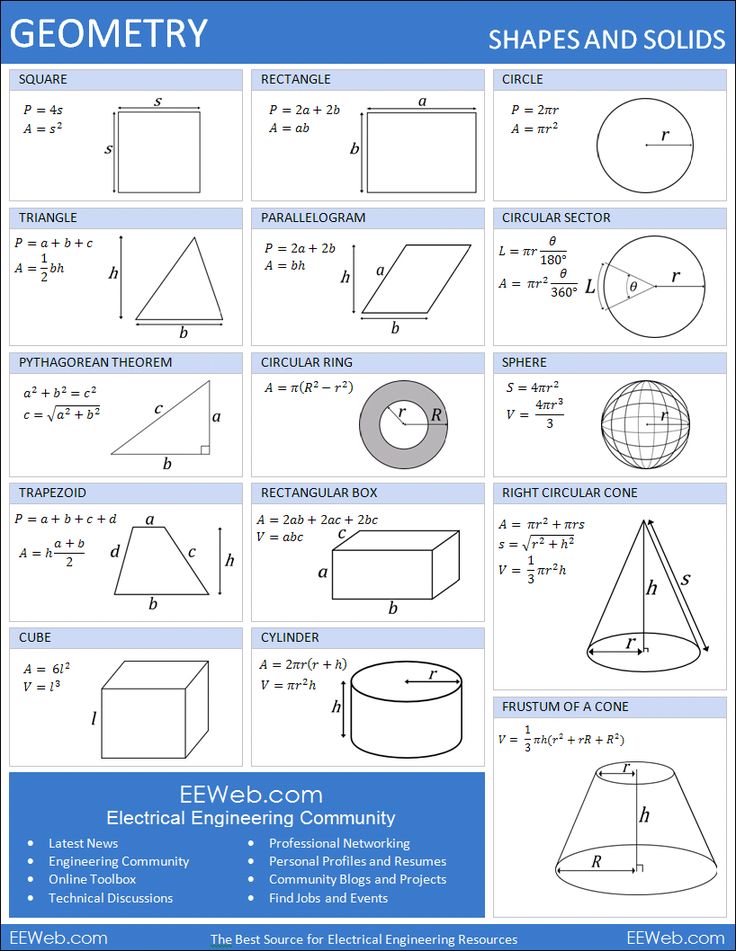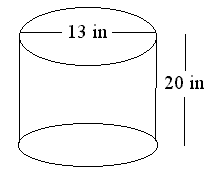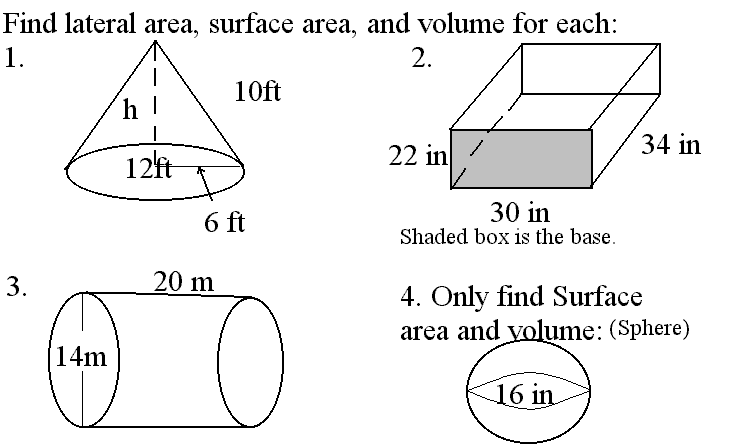

Surface Area and Volume

All formulas
needed for area or volume in this chapter:
Examples:
1. Find the lateral area, surface
area, and volume of the h2
+ 32 = 62 h = 5.2 m
Lateral
area = 2(3.14)(6.5)(20) = 816.4 in2 Surface
area = 2(3.14)(6.5)(20) + 2(3.14)(6.52) Volume
= (3.14)(6.52)(20) 3. Find the lateral area, surface
area, and volume of the First
find the height using Pythagorean Theorem, Example Problems
prism with an equilateral triangular base with sides
6in.
Have to get
area and perimeter of the triangular base:
Have to use
Pythagorean theorem to find the height of the triangular base.

Area of the triangular base is (1/2)(5.2)(6)
Area = 15.6 m2
Perimeter of the triangular base is 6+6+6
Perimeter = 18 m
Lateral Area = Ph or (18)(14) = 252 m2
Total Surface Area = Ph+2B
(18)(14)+2(15.6) = 283.2 m2
Volume = Bh or
(15.6)(14) = 218.4 m3
2. Find the lateral area, surface area, and volume of the cylinder

1081.73 in2
2653.3 in3
pyramid.

h2
+ 92 = 152
h = 12 ft
Find the perimeter and area of the rectangular base - P =
2(18)+2(16) = 68 ft
A = (18)(16) = 288 ft2
Lateral area = (1/2)Pl or (1/2)(68)(15) = 510 ft2
(l is slant height which is 15 ft)
Surface area = (1/2)Pl+B or
(1/2)(68)(15)+(288)= 798 ft2
Volume = (1/3)Bh or (1/3)(288)(12) = 1152 ft3

